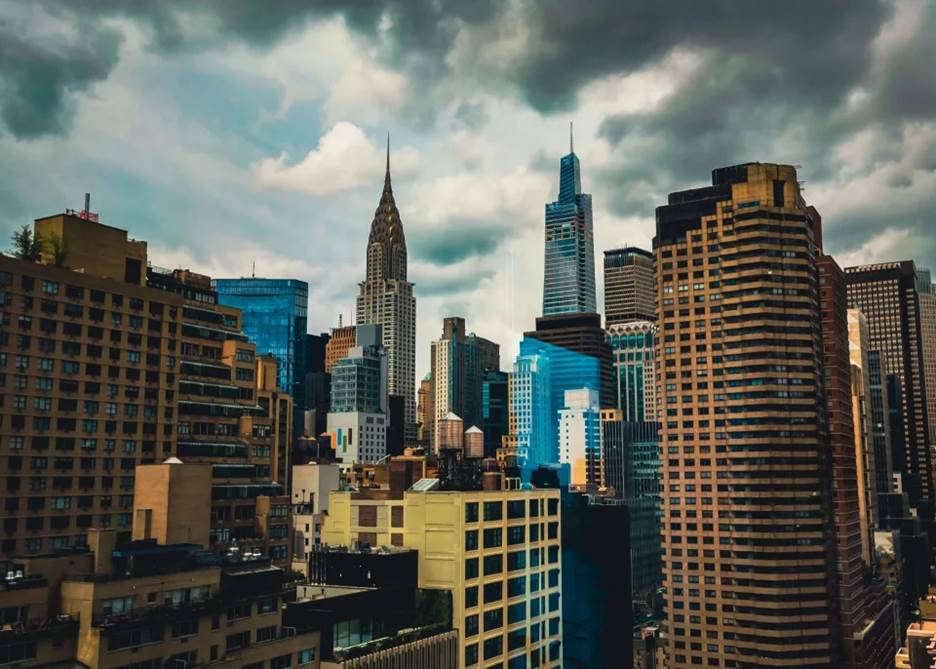
The Big Apple has grown too big for the land it rests on, according to a study released in May showing New York City is sinking under its own weight as the waters around it rise
New Study Makes Grim Revelation about New York City’s Skyscrapers: ‘It Is a Deep Concern’
By Ben Raker
The Big Apple has grown too big for the land it rests on, according to a study released in May showing New York City is sinking under its own weight as the waters around it rise.
What’s happening?
The study, published in Earth’s Future, finds that the Big Apple, home to more than 8 million people, is sinking at a rate of about 0.4-0.8 inches per year.
“There’s a lot of weight there, a lot of people there,” Tom Parsons, the study’s lead author and a geophysicist at the US Geological Survey, told Time. “The average elevation in the southern part of the island is only 1 or 2 meters (3.2 or 6.5 feet) above sea level — it is very close to the waterline, and so it is a deep concern.”
The researchers calculated the mass of New York buildings and determined their downward pressure on the Earth. They also presented satellite-image evidence of gradual sinking caused by the city’s impressive structures.
The buildings in New York weigh 1.68 trillion pounds total, according to the researchers — a mass that The Guardian equated to 140 million elephants (presumably the large African kind).
“It wasn’t a mistake to build such large buildings in New York,” Parsons told The Guardian. “[W]e’ve just got to keep in mind every time you build something there, you push down the ground a little bit more.”
Why is New York’s sinking concerning?
Sinking 0.8 inches per year may not sound like much, but over multiple years, it’s significant, especially considering that New York is a coastal city prone to flooding — and that sea level rise makes its problems worse.
The average sea level near the southern tip of Manhattan has risen about 9 inches since 1950, as reported by SeaLevelRise.org. The organization, which based its findings on National Oceanic and Atmospheric Administration (NOAA) data through 2017, also mentioned costs over $4 billion for New York sea-level preparations.
Worldwide, NOAA has noted that sea level rose about 3.8 inches since 1993. For US coasts, it projected 10-12 inches of rise between 2020 and 2050.
Experts mostly attribute rising waters to glaciers and ice sheets melting and seawater expanding as the world warms.
A triple threat of sinking, sea level rise, and storms puts New York in increasing flood danger. NOAA reported that NYC flooding could happen 20 times as often by the end of the century. This in an area that already experienced 2012’s Hurricane Sandy , which flooded subways and caused 44 deaths and $19 billion in damages, according to the city.
New York is like other places worldwide, dreading sea level rise, storms, and flooding linked to climate change. Indonesia is moving its capital, Jakarta, due to threats of inundation. And the New York study noted that other coastal cities are sinking, too.
What’s being done about the sinking city?
The study’s authors aimed “ to raise awareness ” that building in coastal areas can increase future flood risks. They suggest developers pay attention to building on firmer ground.
As for sea level rise and storms, these hazards are reasons governments and individuals take action to address climate change. Steps such as using public transit or driving cleaner cars are ways to reduce heat-trapping pollution that worsens the probleMs SeaLevelRise.org also has solutions for dealing with rising seas.
Join our free newsletter for weekly updates on the coolest innovations improving our lives and saving our planet. - TCD

